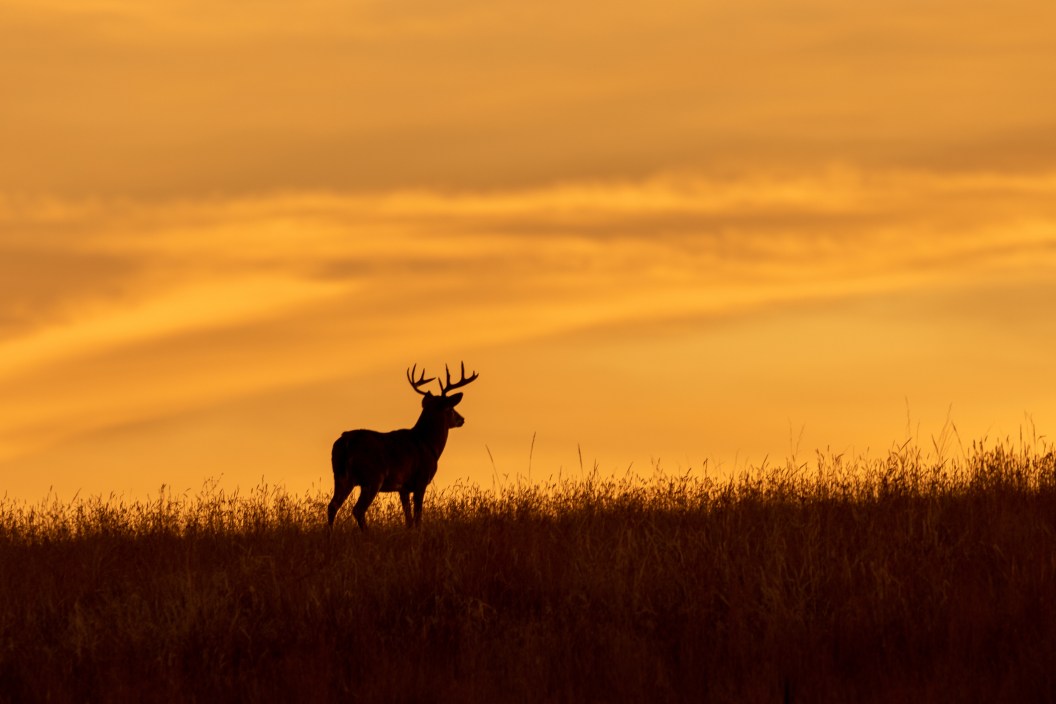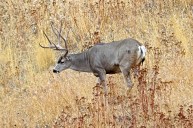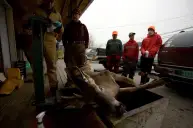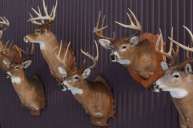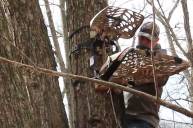If you have ever wondered, "do deer sleep?" you're not alone. Whitetail deer seem to be always alert, always watching out for predators. They move cautiously and observe their surroundings with every calculated step. Especially during deer hunting season, the deer population must be aware of threats from all sides. But like all animals, deer need to snooze from time to time. So, where do deer go to catch some zzzz's? Their sleeping habits might be unique, but they make sense for the way deer live.
As deer hunters, we probably spend more time thinking about deer movement in general than about how whitetail deer sleep. When most hunters refer to bedding areas, they're talking about them in terms of cover and their proximity to water and food sources. We usually think of them as places where the animals can sit and chew their cud in peace during the daylight hours when they're less active. Most hunters use the word "sanctuary" as it is a place where deer can hide from coyotes and other predators more efficiently. Rarely do the sleeping patterns of the animals come into the discussion. We think part of that thinking is thanks to trail cameras. We're used to seeing photos at all hours of the day and night. It can easily lead some hunters to assume that these wary prey animals rarely sleep.
How Often and Long Do Deer Sleep?

Janelle Streed via Getty Images
However, deer do sleep—every single day, in fact, according to the National Deer Association. The reason you may have never seen it is that deer are masters of power naps. That doe I saw on opening morning only slept for roughly half an hour before she was on her feet and moving again. They don't let their guard down very long. Biologists have found most deer sleep cycles only last 15 to 30 minutes at most.
Even if they're fast asleep, deer are creatures of habit. And one of their habits is to constantly be on alert. Their ears will be constantly tuned for sounds of danger. If you've ever walked up on a bedded deer, odds are it was alert and looking at you. Deep sleep, where the animal is oblivious to the outside world, is probably uncommon.
According to the National Deer Association, sleeping deer often catch their shut-eye in cycles. They'll sleep for 30 minutes, stand, stretch, and defecate, before catching another 30-minute nap. Then repeat the whole thing over again. The NDA also notes many hunters may have seen a sleeping deer without ever realizing it. While they don't sleep standing up, they sometimes sleep with their heads up. And they have the amazing ability to sleep with their eyes open.
Most deer sleep more when they are fawns than at any other time in their lives. These animals aren't very mobile their first week or so of life, and a doe will often stash her fawns away for hours on end in a safe place. During the rut, mature bucks likely get less sleep than any other deer in the woods in their endless pursuit of hot does. No matter the animal's age, most deer tend to sleep during daylight hours rather than at night. Deer are crepuscular animals, which means they are most active in the twilight hours of dawn and dusk.
The Places Deer Sleep
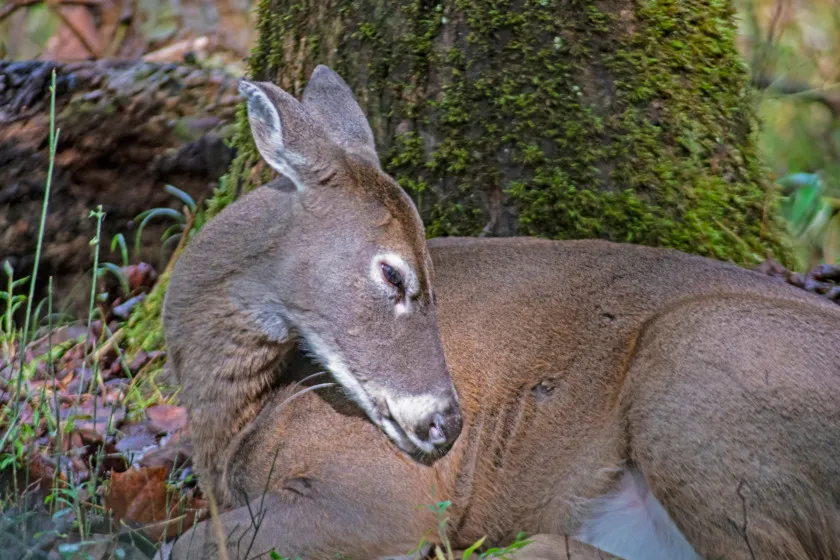
Betty4240 via Getty Images
Ultimately, deer will sleep anywhere they feel comfortable letting their guard down. In most cases, especially for family groups, that means thickets and areas of dense foliage where the deer's natural brown coloration allows them to blend into the background and hide from predators. Areas that make good deer bedding areas are where you're most likely to encounter sleeping deer. While you'll find the occasional deer using open fields or wood lots as bedding locations, mature whitetail bucks, and older female deer are less likely to use these locations. Doe bedding area is usually located in a more secure location.
Mississippi State University has an entire deer lab dedicated to the study of whitetails. They've done extensive work with radio collars to learn how deer move and where they spend most of their time.
With more mature bucks, the scientists discovered that areas with a closed canopy of trees overhead were less likely to be used as deer bedding areas. Mature whitetail bucks avoided these areas. It made perfect sense when they inspected the locations bucks were utilizing; areas with an open canopy and extremely dense vegetation that's hard to walk through. Additionally, the canopy was open above the bedding area, allowing more direct sunlight and vegetation growth. The study also found the area was filled with browse, such as small trees and blackberries, that the deer could feed on while in the area.
It all makes perfect sense. The oldest and most mature bucks know the time of year hunters are hitting the woods. They want to make themselves as invisible as possible, and they can do that in these thick areas of heavy vegetation. Bucks bed and hide from hunting pressure, often with the hunters being none the wiser because such areas often have a bevy of escape routes the second a human steps foot in them.
These areas are also the most likely areas for a deer to sleep, where the animal feels hidden from predators. These deer beds—in the thickest of cover—are often the hardest to find and set up on without bumping a mature buck out of the area. Make no mistake. Once a buck gets a few years of experience under his belt, it doesn't go off dozing just anywhere. Finding these hiding spots is one of the biggest challenges in hunting and is likely why many hunters never come close to harvesting a mature buck each season. Understanding that deer only sleep for short periods each day and in the hidden spots where they feel the most secure will go a long way towards figuring out the rest of their patterns, which will help you fill those tags on that big buck this year.
